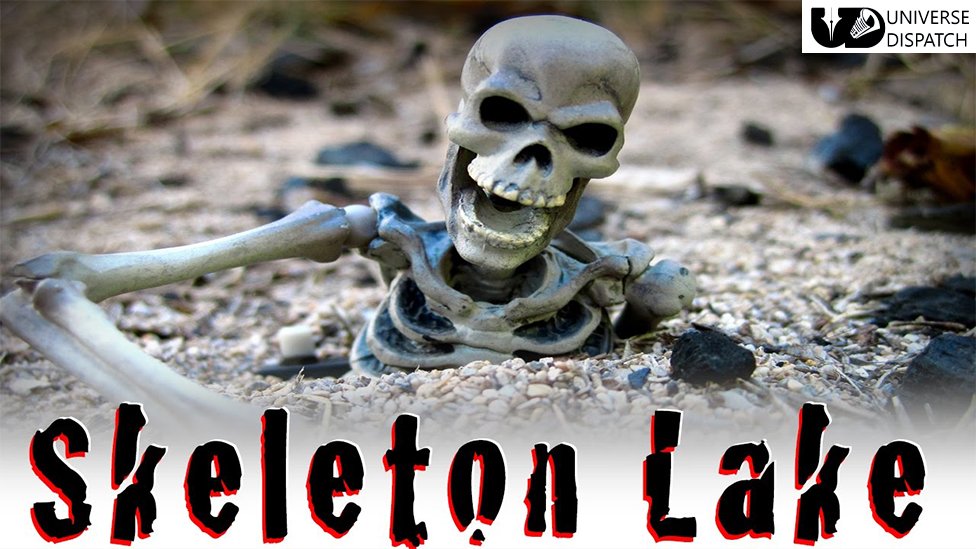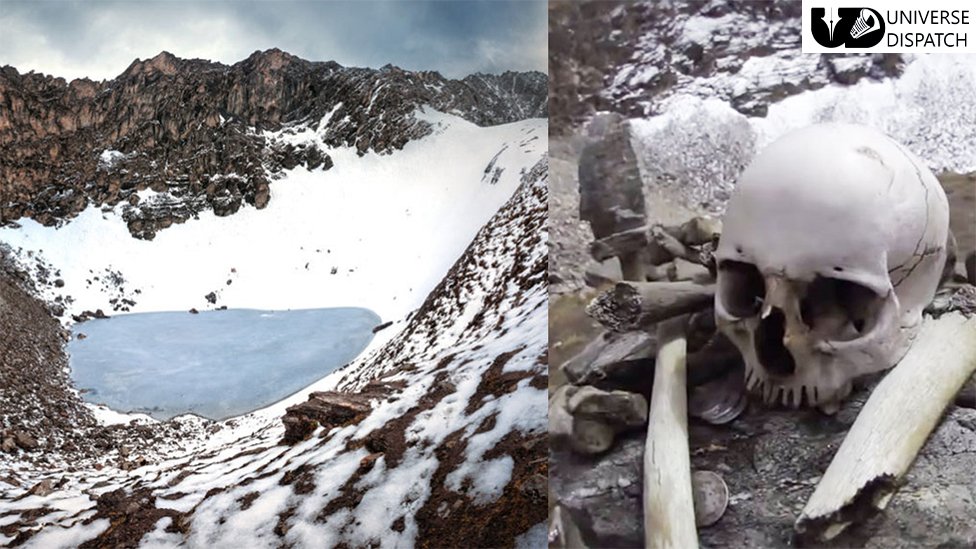The Mystery of India’s ‘lake of skeletons’
Skeletons: High in the Indian Himalayas, a remote lake huddled in a snowy valley is spread with hundreds of human skeletons. On the other hand, Roopkund Lake is located 5,029 meters (16,500 ft). Above sea level at the bottom of a steep slope on Trishul. One of India’s highest mountains, in the state of Uttarakhand.
The remains are strewn around and beneath the ice at the “lake of skeletons“. Discovered by a patrolling British forest ranger in 1942. Provided on the season and weather, the lake, which remains frozen for most of the year, expands and withdraws.

However, the snow melts are the skeletons visible, sometimes with flesh attached and well preserved. To date, the skeletal remains of an estimated 600-800 people have been found here. In tourism promotions, the local government describes it as a ‘mystery lake‘.
Formerly, studies of skeletons have found that most of the people who died were tall -“more than average stature”. Most of them were middle-aged adults, aged between 35 and 40. There were no babies or children. Moreover, some of them were elderly women. All were of reasonably good health. Also, it was generally assumed that the skeletons were of a single group of people who died all at once in a single fatal incident during the 9th Century.
On the other hand, the latest five-year-long study includes 28 co-authors from 16 institutions. Based in India, the US and Germany found all these theories may not be true. Scientists genetically analyzed and carbon-dated the remains of 38 bodies, including 15 women, found at the lake – some of them date back to around 1,200 years.
The skeletons become visible at the lake site
At one point, they found the dead were both transmit variants and their deaths were separating in time by as much as 1,000 years. Moreover, it takes any report that involved a single fatal event that leads to their deaths, Eadaoin Harney, the lead author of the study, and a doctoral student at Harvard University.
However, more interestingly, the genetics study found the dead comprised a diverse people: one group of people had genetics similar to present-day people who live in South Asia.

While the other “closely related” to people living in present-day Europe, particularly those living on the Greek island of Crete. Also, the people who came from South Asia “do not appear to come from the same population”.
Some of them have extraction that would be more common in groups from the north of the subcontinent. While others have extraction that would be more common from more southern groups, says Ms. Harney. Moreover, No arms or weapons, or trade goods are founding at the site the lake is not locating on a trade route. Genetic studies found no evidence of the presence of any ancient bacterial pathogen.
A journey that passes by the lake might explain why people were traveling in the area. Studies reveal that likely accounts of journeys in the area do not appear until the late 19th Century. For that reason, scientists believe that some of the bodies found at the site happened because of a “mass death during an extraction event”. However, how did people from the eastern Mediterranean land up at a remote lake in India’s highest mountains?
Moreover, it looks probably that people from Europe would have traveled all the way from Roopkund to participate in a Hindu extraction.




